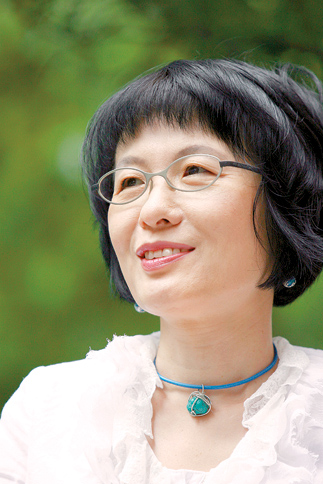I am woman, hear me roar

Kim Hye-sun .Genre: Poetry. Publisher: Prairie Schooner, 2006
April is the cruelest month, breeding Lilacs out of the dead land, mixing Memory and desire, stirring Dull roots with spring rain.
Eliot’s work was translated into Korean in the 1930s, as Korean poets moved away from traditional forms of writing such as sijo, which resembles Japanese haiku, having a three-line structure with 14 syllables per line.
The experiment with Western modernist lyricism did not last long. Korean poetry in the remainder of the 20th century reflected the country’s turmoil. Themes of love were frequently addressed, but not in ways that appeal to the greeting card manufacturers who supply Starbucks.
One of the most notable authors of this period is Kim Hye-sun. Take the opening of her poem “Regarding Love.” It’s the literary equivalent of wrapping one’s tongue in barbed wire:
He opens the window puts his hand inside my heart and pumps out water Ms. Kim is a rare animal. She is a female poet. In Korea, poetry has usually been the preserve of men. Female Korean poets began to be published in the 1920s but the literary establishment expected them to write verse that was soft, contemplative and beautiful.
Ms. Kim’s work is a brave departure from the constraints of convention. She writes with bold strokes. Her verse does more than challenge the idea that female poetry must be restrained and gentle. It suggests that women can also abandon restraint and delicacy. The hand that writes her verse is never likely to be found in front of her face, trying to hide a laugh. Take “Rhythm” for example, written in 1999:
There goes a woman carrying a teardrop.Erasing, erasing the world there goes one woman carrying a teardrop. Erasing her own face there goes one woman carrying a teardrop.
This piece is typical of the work that emerged from Another Culture, a group of women authors that Ms. Kim joined in the ’80s. From her point of view, the group’s purpose was to challenge the male dominance of language. An essay about her written by the Poetry Center of Smith College in Massachusetts describes her thus: “She explores women’s multiple and simultaneous existence as grandmothers, mothers, daughters and lovers, and speaks of the creation of a new language for women ― a language untouched by the powerful male presences that dominate Korean literature.”
In Ms. Kim’s poetry her positions are clearly expressed. Whereas, in her view, men colonize language and the things it describes, cutting it up into controllable dominions, women exist alongside words and things, collaborating with the world. When they write a poem they do so like a mother, bringing it forth and letting it go its own way.
Kim’s rebelliousness has made her a leader in the Korean women’s movement. In 2001 she won the prestigious Sowol poetry award. She now teaches creative writing at the Seoul Institute of the Arts. From there she throws out bombs like this one that was published in the poetry magazine Prairie Schooner in 2002:
Appear with a deep blue knife and quilt every inch of my scalp then discard it into boiling water then shake and pull out from the water my hair that has turned white then stir tasty dressing over my hair and eat it like yum yum noodles in broth during one summer after noon.
That verse is not something one is likely to find in a Hallmark card this Valentine’s Day, but for those wanting poetry that’s red in tooth and claw, Kim Hye-sun is the real deal and she offers a perfect point at which to begin an exploration of modern Korean poetry.
By Daniel Jeffreys Deputy Editor [dan7jeffreys@aol.com]










with the Korea JoongAng Daily
To write comments, please log in to one of the accounts.
Standards Board Policy (0/250자)